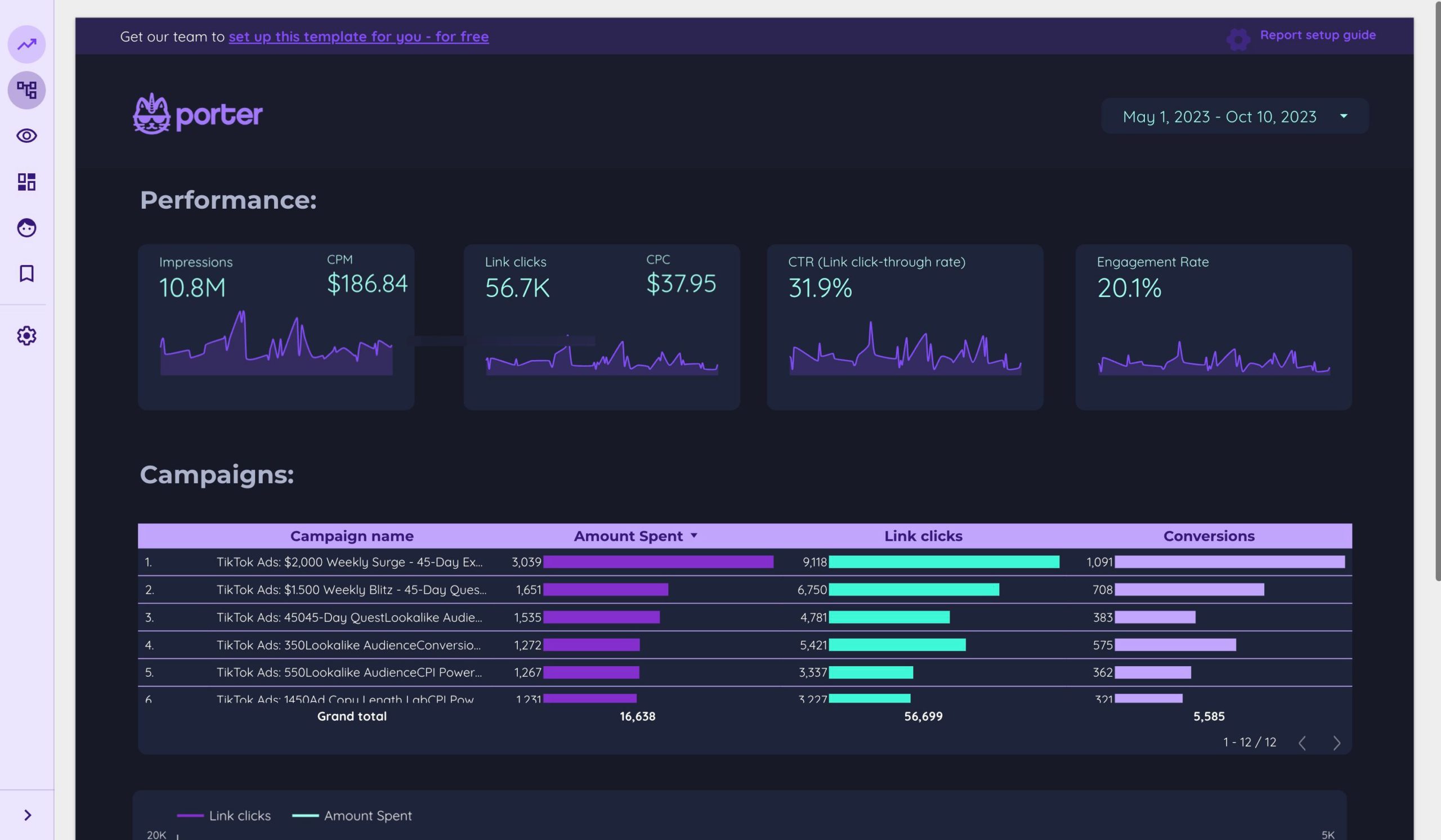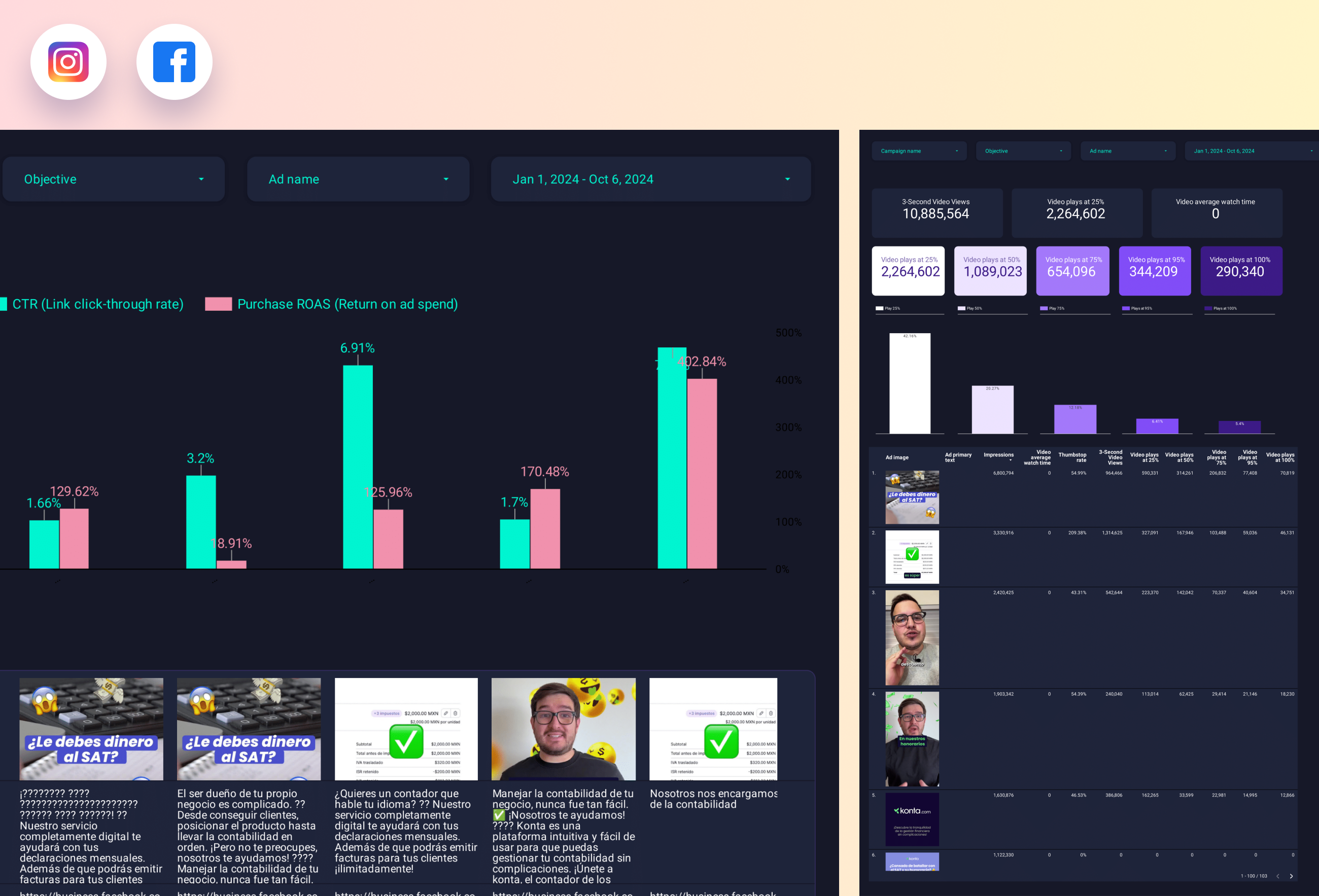TikTok Ads Dashboard Template
Analyze campaigns in Looker Studio. Track impressions, clicks, conversions, and cost with a free TikTok Ads connector.
View Template TikTok Ads
TikTok Ads


Analyze campaigns in Looker Studio. Track impressions, clicks, conversions, and cost with a free TikTok Ads connector.
View TemplateCompare spend by campaign and time. Visualize pacing, budget, and ROI using a free connector.
View Template
Evaluate creatives by engagement, CTR, conversions, and cost. Surface top-performing videos and assets.
View Template
Porter✓ No-code marketing data warehouse |
Others✓ Connectors & ETL |
|
|---|---|---|
| Storage | Built-in, self-managed BigQuery with automated transformations, transfers, queries, and costs included. | Requires setting up your own BigQuery project, managing tables, transfers, and costs. |
| Data syncing | Switch between stored BigQuery and real-time API data in the same connection. | Either stored (manual BigQuery setup) or real-time, not both. |
| Data blending | Blend Meta Ads by campaign, creative, and attribution window—no manual mapping needed. | Manually join Meta Ads tables by campaign, creative, and attribution window. |
| Destinations | Looker Studio + Google Sheets in one subscription. | Separate price per destination. |
Step 1: Choose the Meta Ads integration on Porter Metrics
Step 2: Log in with your Google account to access Looker Studio
Step 3: Log in to your Facebook profile with access to your Meta Ads accounts
Step 4: Select your Meta ad accounts and grant access to all for reporting
Step 5: Create your report and load a default template to monitor Meta Ads and automate your reporting
Full tutorial: How to connect Meta Ads to Google Looker Studio
Billed annually
Avg. price per account: $12.5/mo ↓
Start 14-day free trial